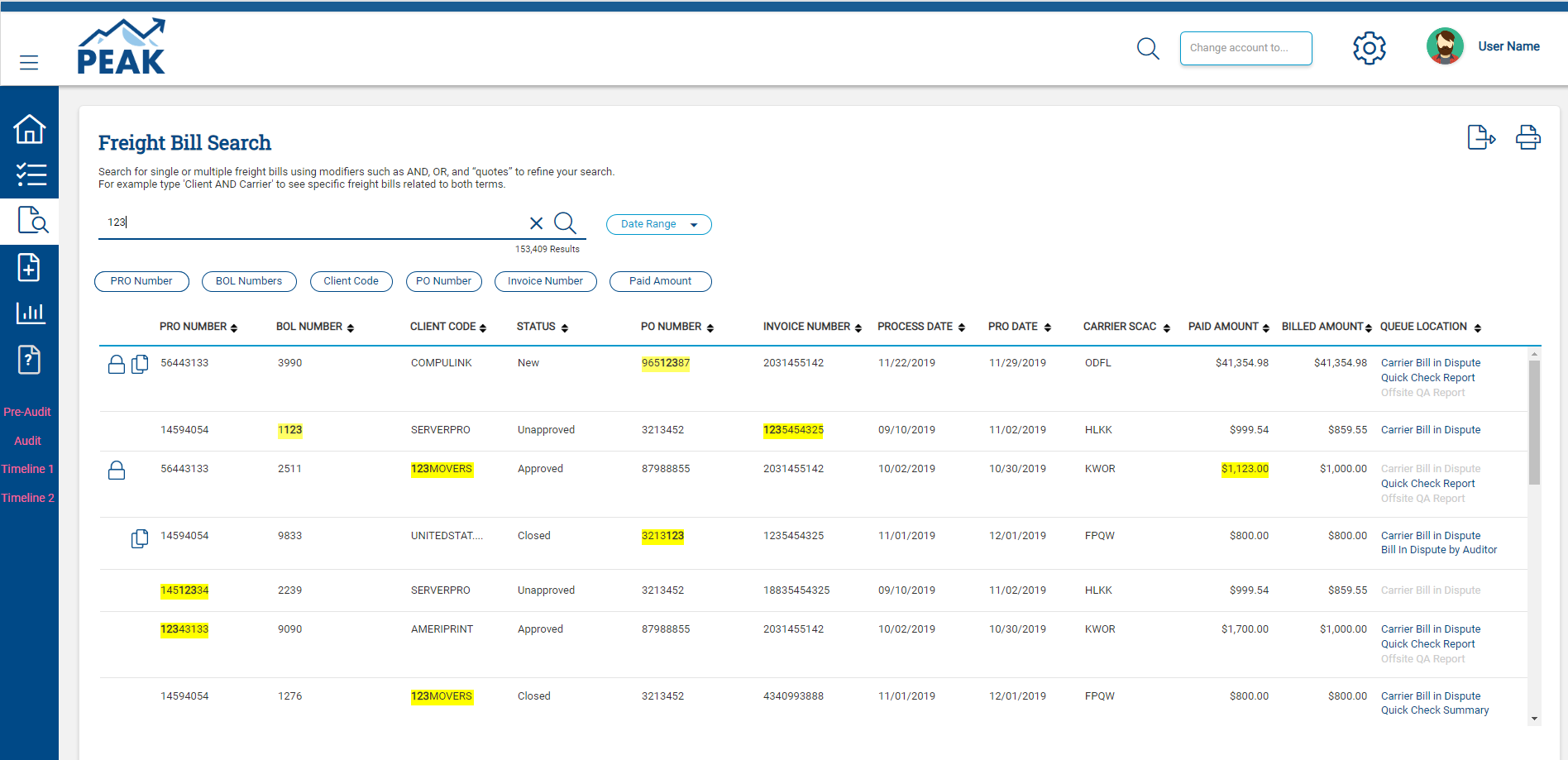Elevating a Platform
The Challenge
Ascent Global Logistics delivers elite solutions designed to optimize logistics performance.
From tendering to delivery, the PEAK Platform mission is to integrate several unique personas seamlessly. The challenge is to allow users to easily accomplish their diverse goals with clear transparency from start to finish.
The ask was to integrate seven existing logistics systems into one single sign-on application called PEAK Platform to accommodate many unique journeys.
With a vast array of stakeholders and project owners, there are many needs and pain-points that must be considered carefully.

Let’s Dig In
In order to deliver a best-in-class system to our users, we first needed to discover what existing workflows were essential in those previous legacy systems that must not be disturbed.
By performing extensive interviews with the stakeholders and system users, we learned the nature of the business and identified our goals for success.
The intent was to determine the functionality and analyze both successful as well as unsuccessful workflows. As we began to understand the necessary elements, as well as identify the pain-points, our path to success became clear.

Our Gameplan
Strategy is definitely undoubtedly the most exhilarating stage of the UX process. Brainstorming and collaborating to conceptualize and articulate our best ideas – our best solutions. This is the stage of the process that will definitively determine whether or not the project will be industry-leading.
With a core group of creative team players and out-of-the-box thinkers, we left no stone unturned. We explored and exhausted countless amounts of data to identify our possibilities to best accommodate all of the PEAK users. From integrating drones, automated trucks and gamifying the experience, no ideas were off the table.
Upon determining what was necessary for Most Viable Product (MVP) and backlogging other functional ideas for the future, it was time to get to work with the design.
Designing the Platform
Site Maps
It was a bit of a challenge to design such a robust system that needed to satisfy so many different individuals using the system in so many different ways. It was evident that a site map was necessary to organize all the content and ideas that we had identified. We leaned on the services of Flowmapp, a fantastic tool for creating site maps to create ours:
Flowmapp sitemap for a PEAK Platform 2 week Sprint.
Wireframes
An essential step in designing any application is creating wireframes, which I consider to be the blueprints of the project. This is the stage in which a UX designer must shift gears and become an architect.
For PEAK Platform, creating countless wireframes was a crucial step in determining the structure, flow, and foundation of the application. Only after wireframes are created could the application begin to grow and bloom.
A small sample of our PEAK Platform wireframes.
By creating wireframes, we had the ability to give the PEAK Platform business owners, project owners and developers the opportunity to walk through the structure of the application without getting sidetracked by design elements such as colors and imagery.

“UI is the saddle, the stirrups, and the reins.
UX is the feeling you get being able to ride a horse.”
- Dain Miller
Prototyping and Visual Design
The next step in breathing life into PEAK Platform was visual design. This step was intended to really get the aesthetics of PEAK on the screen. When I created PEAK Platform, I combined the two steps of hi-fidelity mock-ups with creating fully functional prototypes.
I used Axure RP to deliver a rich and immersive experience to the stakeholders and project owners. It was imperative that our business understood my concepts and workflow functionality before developers created a single line of code.
Budgeting time accordingly during the creation of PEAK Platform allowed me to build the most professional & highest quality designs possible. I provided visual elements for every corner of the PEAK universe, including hi-res mocks, early-stage concepts, and interactive prototypes that were cosmetically accurate and engineered for production.
My work for PEAK Audit and Pay helped our stakeholders visualize a complicated system in a new way. When strapped with a system that hadn’t been updated in 10 years, the advances in technology blow them away.
I had similar success with my work on PEAK Order Management; an international freight delivery and communication system. When asked to create a prototype for something as tricky as international logistics, I certainly needed to elevate my creative understanding and prototyping to the highest level. Take a look and click around.

Test, Test and then Test some more!
When PEAK Platform was beginning to take shape, we needed to put our crucial stage 4 into action: user testing. When anyone asks me, “When should testing begin?” the answer was always the same. Early and often!
We had collected some great resources and connections in our Discovery stage, and we reached out to these individuals to provide feedback and verify that PEAK Platform had hit its mark!
By circling back with some initial resources and connecting with anxious volunteers, we learned that barring a few tweaks and small adjustments, we were on the right track.
Additionally, some features that we thought were essential functions were proven to be unnecessary. We also discovered other features that were simple additions to the PEAK workflow process were wildly successful and would turn out to be used daily by some users!
Measuring Success
Metrics are the results that determine whether or not our UX strategy for PEAK Platform was working. Using Microsoft Power BI and Google Marketing Platform, we captured a clear understanding that the success of our application metrics was key to tracking changes over time, benchmarking against iterations of our own application, and setting new targets.
Once we evaluated the results, we could determine how to enhance PEAK Platform. What does that mean? It means version 2.0 is on the horizon! When applied correctly, the UX process proves to be the solution to any application challenge!









